steel wire rope terminations quotation
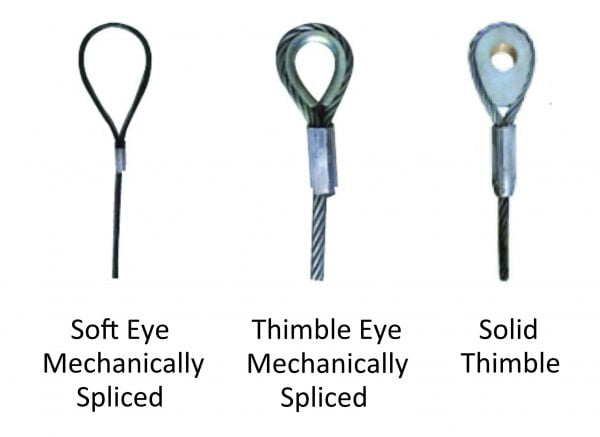
• Based on the catalog breaking strength of wire rope, Crosby wire rope clip have an efficiency rating of 80% for 3-4mm to 22mm sizes, and 90% for sizes 24-26mm through 90mm.
• Meets or exceed all requirements of ASME B30.26 including identification, ductility, design factor, proof load and temperature requirements. Importantly, these wire rope clips meet other critical performance requirements including fatigue life, impact properties and material traceability, not addressed by ASME B30.26.
Spelter socket terminations have an efficiency rating of 100%, based on the catalog strength of wire rope. Ratings are based on the recommend use with 6×7, 6×19, or 6×36, IPS or XIP (EIP), XXIP (EEIP), RRL, FC, or IWRC wire rope. Strand constructed with minimal number of wires (e.g. 1×7) requires special consideration that socket basket be five (5) times the strand diameter or fifty (50) times the wire diameter, whichever is the greater.
Wedge socket terminations have an efficiency rating of 80% based on the catalog strength of XXIP wire rope.Meets or exceed all requirements of ASME B30.26 including identification, ductility, design factor, proof load and temperature requirements. Importantly, these sockets meet other critical performance requirements including fatigue life, impact properties and material traceability, not addressed by ASME B30.26.Type approval and certification in accordance with ABS 2006 steel Vessel Rules 1-1-17.7, and ABS Guide fo r Certification of Cranes.Basket is cast steel and individually magnetic particle inspected.Pin diameter and jaw opening allows wedge and socket to be used in conjunction with closed swage and spelter sockets.Secures the tail or “dead end” of the wire rope to the wedge, thus eliminates the loss or “punch out” of the wedge.
Eliminates the need for an extra piece of rope, and is easily installed.The TERMINATORᵀᴹ wedge eliminates the potential breaking off of the tail due to fatigue.The tail, which is secured by the base of the clip and the wedge, is left undeformed and available for reuse.
Utilizes standard Crosby Red-U-Bolt® wire rope clip.The 9-10mm through 28mm standard S-421 wedge socket can be retrofitted with the new style TERMINATORᵀᴹ wedge.Available with Bolt, Nut, and Cotter Pin. US patent 5,553,360, Canada patent 2,217,004 and foreign equivalents.Meets the performance requirements of EN 13411-6: 2003.
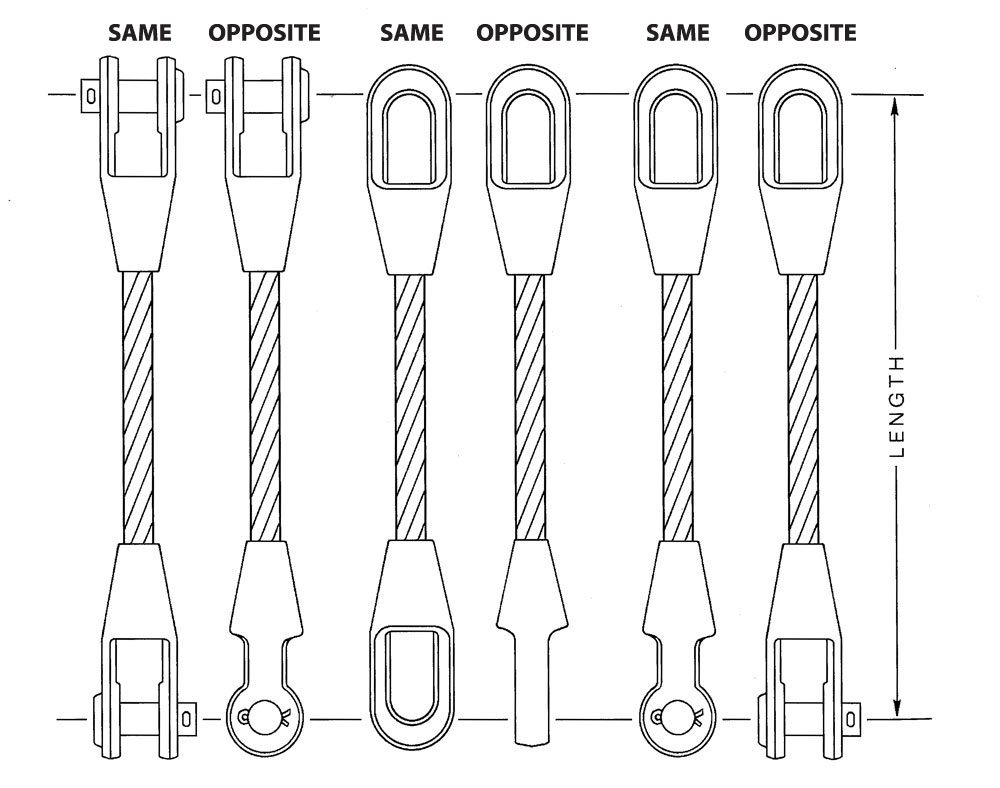
Each base has a Product Identification Code (PIC) for material traceability, the name CROSBY or CG, and a size forged into it. Based on the catalog breaking strength of wire rope, Crosby wire rope clips have an efficiency rating of 80% for 1/8” - 7/8”...
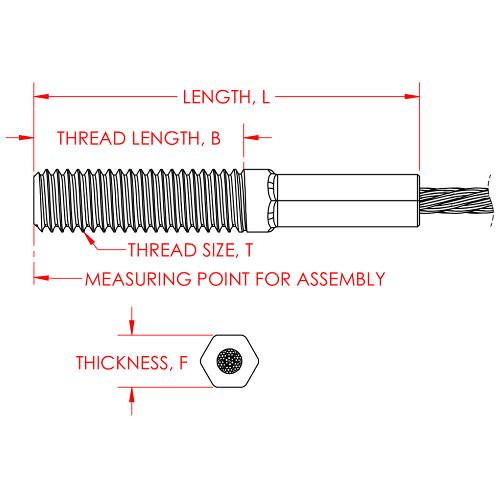
If you are unsure of which wire rope or components to use or you have any additional requirements, please give us a brief explanation on what your assembly is being used for.

What is a thimble end fitting?A thimble is a special type of heavy duty, grooved metal end fitting. Its goal is to protect the fastening loop of a wire rope.
We define “at-risk loops,” by loops that are at risk of bending under the weight of a load or are under the forces of abrasion. Thimble for wire rope is installed on the inside of a loop, protecting the cable from abrasion and preserving the loops open shape.
What materials does Tyler Madison use to produce standard thimble end fittings?We make our thimble endings out of cold rolled steel (AN100 type), galvanized steel or stainless steel.
However, thimble end fitting applications rely on strength, corrosion resistance, abrasion resistance and durability. Few materials outside of the steel family meet all of these qualifications without great manipulation or alteration.
Thimble end fittings work very well on cable railing, stainless steel medical cables and wire rope tethers, and anything that is under large consistent tension forces.
Who is Tyler Madison?Tyler Madison is a leading American wire rope manufacturer based out of Apple Valley Minnesota. We create high quality wire rope fittings, wire rope lanyards, cable railing, wire rope tethers and countless standard and custom wire rope cable assemblies.
Why choose Tyler Madison?Tyler Madison is energized by challenges! We have the capabilities and know-how to create wire rope assemblies for high-stake applications. These include aircraft cable assemblies, military cables, stainless steel medical cables and push pull control cables. From start to finish, we create your wire rope assemblies using the latest technology and the best quoting practices.

Our fork and jaw end fittings must be machine swaged for proper hold strength. Lexco takes pride in our assembly work and will quote any assembly you need per your specification or design print.
Lexco® Cable supplies both commercial grade and MIL SPEC (MS20667) fork ends. Typically machined from 304 stainless steel, they are available in various sizes to accommodate cable from 1/16” to 1” in diameter.
Commercial and military grade fork ends must be machine swaged for proper hold strength. Please contacta Lexco® sales representative to receive an assembly quote.

Large structures and equipment needing stabilization and support require specially-fabricated wire rope products. These assemblies usually fit swaged or poured terminations to wire rope. Assemblies like these used on boom cranes are referred to as either pennant or boom lines. Similarly-made products are also frequently used in structures such as large awnings and support cables for bridges.
The proper application of these types of assemblies requires careful consideration of capacity, length, plane, and type of termination. The capacity of the socketed assembly will be determined by the diameter and grade of wire rope. Trinity Sling offers a wide variety of wire ropes suitable for socketed and threaded wire rope terminations. The length of a socketed or threaded wire rope assembly requires exacting measurements. These usually are ordered in pairs and require length matching. Due to the differences in stretch inherent in different batches of wire rope, it is not recommended that new socketed slings be matched to used assemblies. The lengths will be mismatched under load.
At Trinity Sling we have years of experience with the various types of socket terminations. The terminations most commonly come with one of three types of connections; open socket (female), closed socket (male), and threaded ends. An open socket looks like a fork with a pin that can be inserted to close and secure the end fitting to the opening of the fork. A closed socket has an eye. The eye of the closed socket is designed to accept the pin of the open socket so they can be linked together. Threaded wire rope end fittings can be made with any type of thread pitch or thread length required for the application.
With open and closed socket wire rope terminations the plane of the attachment to the wire rope is also important. The plane of the assembly is determined by the degree relative to each end to which the terminations are attached. Consult the diagram from the Wire Rope Sling User’s Manual for reference to same and opposite planes.
Whether a job requires poured sockets or swaged sockets, well-built assemblies will carry up to 98% of the rated break strength of the rope. Poured sockets are usually set with an epoxy covering the broomed wires inside the socket, while swaged end fittings are attached by forming the shank of the end fitting over the wire rope with a press. Poured socket wire rope end fittings feature flexibility of assembly.
With a properly-trained person and the right equipment, poured sockets can be made in the field. Field installation should not be used in critical or overhead lifting or supporting applications, however, as those applications cannot be proof tested in the field.
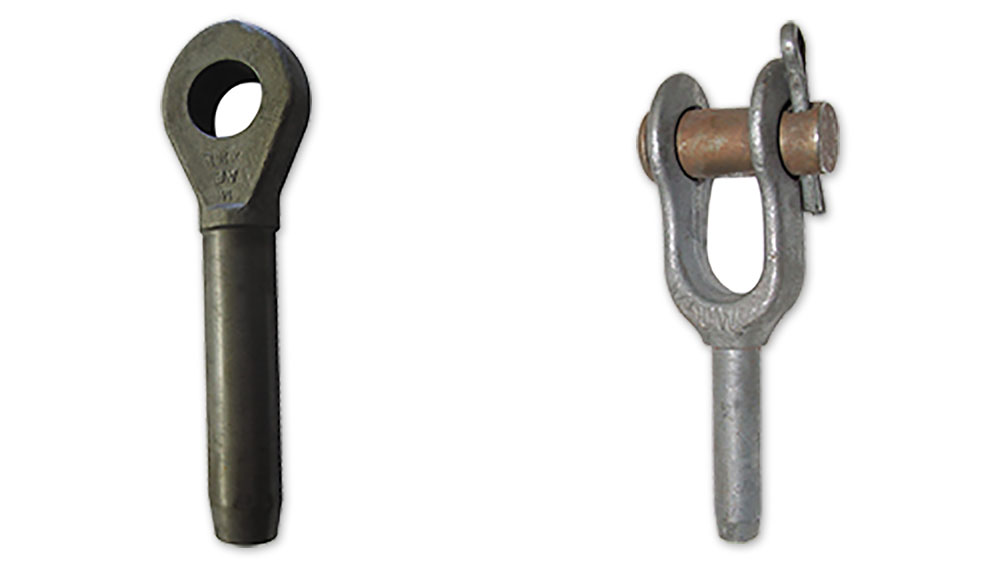
Our range comprises stainless steel cables in diameters from 0.62 mm up to 26 mm in various configurations:Single-strand constructions: 1 × 7, 1 × 19, 1 × 37
Wire ropes and rods can be assembled with thread ends in different designs and configurations, including:Standard external and internal thread ends, swaged

Wire assemblies are also useful in motion control and mechanical automation applications for not only lifting but pulling and support as well. Wire rope assemblies allow for the incorporation of wire cables into machinery or other equipment for use improving connectivity and versatility and to prevent damage, such as fraying, to the rope mechanisms.
The capacity of a given system is determined by the type and placement of wire rope fittings in the assembly. Common fittings include clamps, clips, sleeves, links, hooks, forks, eyes, studs, and pins. The utility and added security afforded by wire rope assemblies allows their use in both commercial and residential arenas in addition to their traditional applications in the industrial sector.
As cables for heavy-duty hoisting vary considerably from those used to support a home shelving unit, it is vital that the intended use be considered when selecting the proper assembly. Wire rope manufacturers often provide a range of wire fitting options in order to accommodate the many different uses for the cables.
While specific fittings and terminations are achieved through various metal stamping, die cutting, or swaging techniques, the process of wire rope making is fairly uniform, though specifics will vary.
Wire ropes comprise the base or body of every assembly, these are the lengths of stranded wire cable that run between two fittings or pieces of equipment. Each rope consists of three main elements. Cold drawn metallic filaments are twisted or braided into strands which are in turn helically wrapped around a core, which may be metal or fiber based. The number of strands per cable and filaments per strand are used to identify wire ropes as are the lay or style in which each component was assembled.
Fittings and wires are commonly made of the same materials; most popular are durable metals. Steel and stainless steel, titanium, nickel alloys, and other metals are selected based on specific properties such as resistance to wear and corrosion, tensile strength, and weight to strength ratios.
Further considerations for wire rope assemblies include diameter, length, flexibility, difficulty of flattening, temperature resistance, and average lifespan.
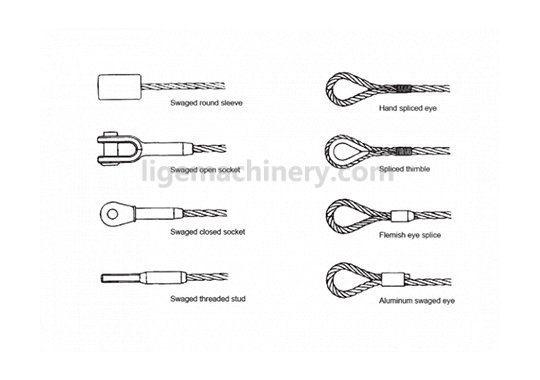
Wire rope manufacturers produce their products in order to provide a high load capacity, versatile alternative to weaker ropes like manila rope or hemp rope. Wire rope products are used for a wide variety of motion transmission applications, among them: lifting, baling, tie down, hoisting, hauling, towing, mooring, anchoring, rigging, cargo control, guidance and counterbalance. They can also be used as railing, fencing and guardrailing.
Wire rope is a must-have for many heavy duty industrial applications. From mining to forestry to marine and beyond, there’s wire rope for almost every job. Some of the many industries in which wire rope is popular include: construction, agriculture, marine, industrial manufacturing, fitness, sports and recreation (plastic coated cables for outdoor playground equipment and sports equipment), electronics, theater (black powder coated cables for stage rigging), mining, gas and oil, transportation, security, healthcare and consumer goods.
Wire rope as we know it was invented just under 200 years ago, between 1831 and 1834. At that time, the goal was to create a rope strong enough to support work in the mines of the Harz Mountains. Invented by Wilhelm Albert, a German mining engineer, this wire rope consisted on four three-stranded wires. It was much stronger than older rope varieties, such as manila rope, hemp rope and metal chain rope.
While studying at Freiburg School of Mines, a man named L.D.B. Gordon visited the mines in the Harz Mountains, where he met Albert. After he left, Gordon wrote to his friend Robert Stirling Newall, urging him to create a machine for manufacturing wire ropes. Newall, of Dundee, Scotland, did just that, designing a wire rope machine that made wire ropes with four strands, consisting of four wires each. After Gordon returned to Dundee, he and Newall, along with Charles Liddell, formed R.S. Newall and Company. In 1840, Newall received a patent for “certain improvements in wire rope and the machinery for making such rope.”
In 1841, an American manufacturer named John A. Roebling began producing wire rope for suspension bridges. Soon after, another set of Americans, Josiah White and Erskine Hazard, started incorporating wire rope into coal mining and railroad projects, forming Lehigh Coal & Navigation Company (LC&N Co.). In 1848, wire rope from their wire rope factory in Mauch Chunk, Pennsylvania provided the lift cables needed to complete the Ashley Planes Project. This project sought to improve the performance and appearance of the freight railroad that ran through Ashley, Pennsylvania, by adding lift cables. This increased tourism and increased the railroad’s coal capacity. Before, cars took almost four hours to return; after, they took less than 20 minutes.
Wire rope likewise changed the landscape (again) in Germany, in 1874, when an engineering firm called Adolf Bleichert & Co. used wire rope to build Bi-cable aerial tramways. These allowed them to mine the Ruhr Valley. Several years later, they also used wire rope to build tramways for the German Imperial Army and the Wehrmacht. These tramways were wildly successful, opening up roads in Germany and all over Europe and the USA.
Since the 1800s, manufacturers and engineers have found ways to improve wire rope, through stronger materials and material treatments, such as galvanization, and different rope configurations. Today, wire rope makes possible many heavy industrial processes. It has become a necessity of the modern world.
Strands are made by tightly twisting or braiding individual wire together. One strand could have anywhere between two and several dozen wire filaments depending on the necessary strength, flexibility, and weight capacity.
One of the most dynamic elements of wire cables is the inner core. The strands are wrapped around the core, and it can be made of different metals, fibers, or even impregnated fiber materials. For heavy applications, cores are often made of a different strand of wire called an independent wire rope core (IWRC). An IWRC has a considerable amount of flexibility and it is still very strong. In fact, at least 7.5% of the strength increase in a wire rope can be attributed to an IWRC.
While they sometimes use other metals, like aluminum, nickel, copper, titanium, and even bronze for some applications, manufacturers primarily produce wire rope from steel. This is because steel is very strong and stretchable. Among the most common types they use are: galvanized wire, bright wire, stainless steel and cold drawn steel.
Of the wire rope steels, cold drawn carbon steel wire is most popular, although stainless steel wire rope is sometimes employed as well. Stainless steel rope is most popular for its anti-corrosive properties. Bright wire rope, a type of ungalvanized steel wire rope, is also popular. For added strength and durability, galvanized steel wire rope/galvanized steel cables are a very popular choice. Galvanized aircraft cable, for example, is always a must in aerospace.
When choosing or designing a custom wire rope for your application, suppliers consider factors such as: the environment in which the rope will function, required rust resistance, required flexibility, temperature resistance, required breaking strength and wire rope diameter. To accommodate your needs, manufacturers can do special things like: make your rope rotation resistant, color code your rope, or add a corrosion resistant coating. For instance, sometimes they specially treat and coat a cable with plastic or some other compound for added protection. This is particularly important to prevent fraying if the wire rope is often in motion on a pulley.
Manufacturers and distributors identify the differences in wire cable by listing the number of strands and the amount of wires per strand so that anyone that orders understand the strength of the cable. Sometimes they are also categorized by their length or pitch. Common examples of this include: 6 x 19, 6 x 25, 19 x 7, 7 x 19, 7 x 7, 6 x 26 and 6 x 36.
More complex wire rope identification codes connote information like core type, weight limit and more. Any additional hardware like connectors, fasteners, pulleys and fittings are usually listed in the same area to show varying strengths and degrees of fray prevention.
Cable wire rope is a heavy-duty wire rope. To give it its high strength, manufacturers construct it using several individual filaments that are twisted in strands and helically wrapped around the core. A very common example of cable wire rope is steel cable.
Spiral rope is made up an assemblage of wires with round or curved strands. The assemblage features at least one outer layer cord pointed in the opposite direction of the wire. The big advantage of spiral ropes is the fact that they block moisture, water and pollutants from entering the interior of the rope.
Similarly, stranded rope steel wire is made up of an assemblage of spirally wound strands. Unlike spiral rope, though, its wire patterns have crisscrossing layers. These layers create an exceptionally strong rope. Stranded rope may have one of three core material types: wire rope, wire strand or fiber.
Wire rope chain, like all chains, is made up of a series of links. Because it is not solid, wire rope chain is quite flexible. At the same time, it is prone to mechanical failure.
Wire rope slings are made from improved plow wire steel, a strong steel wire that offers superior return loop slings and better security. The plow wire steel also shields rope at its connection points, which extends its working life. Wire rope slings, in general, provide their applications with increased safety, capacity and performance. Wire rope sling is a rope category that encompasses a wide range of sub-products, such as permaloc rope sling, permaloc bridle slings and endless slings. These and other wire rope slings may be accompanied by a wide variety of sling terminations, such as thimbles, chokers and hooks.
Wire rope offers its user many advantages. First, design of even distribution of weight among strands makes it ideal for lifting extremely heavy loads. Second, wire rope is extremely durable and, when matched properly to the application, can withstand great stress and elements like corrosion and abrasion. In addition, it is very versatile. Its many iterations and the ways in which the rope can treated means that users can get rope custom fit for virtually any application.
Depending on the type of wire rope with which you are working and your application, you may want to invest in different accessories. Among these accessories are: wire rope clips, steel carabiners, fittings, fasteners and connections.
To ensure that your wire rope quality remains high, you must regularly inspect them for wear and degradation. The right wire rope should be selected for a particular use. Watch out for performance-impacting damage like: rust, fraying and kinks. To make sure that they stay in tip-top shape, you should also clean and lubricate them as needed. Check for this need as a part of your regular inspection.
Rope care is about more than inspection. It’s also about making an effort to use and store them properly every time you use them. For example, never exceed your rope’s rated load and breaking strength. Doing so will not only cause the weakening of your cable, but it may even cause immediate breakage. In addition, always store your wire rope cable in a dry and warm area, away from those elements that could cause premature rusting or other damage. Finally, always carefully wind your wire rope when you’re done with it, so as to avoid kinks. If you follow all these tips and treat your wire rope assemblies well, they will reward you with a long and productive service life.
Always make sure that you purchase wire rope that matches your industry and regional standards. Some of the most widely referenced standards organizations for wire rope include: ISO, ASTM International and OSHA. Talk over your specifications and application with your wire rope supplier to figure out what’s best for you.
If you’re in the market for a wire rope or a wire rope assembly, the best way to know you’re getting something that will both perform well and be safe if by working with a vetted professional. Find one among the list we’ve provided on this page. Check out their profiles to get an idea of the services and products they offer. Pick out three or four to whom you’d like to speak, and reach out. Talk to them about your specifications, standard requirements and budget. Ask about lead times and delivery options. Once you’ve spoken with all of them, compare and contrast their answers. You’ll know you’ve found the one when you talk to a wire rope company that is willing to go above and beyond for your satisfaction.

Among the wire rope hardware and cable assemblies we offer, we have a large inventory of wire rope threaded cable end fittings and end stops. Our threaded wire rope end fittings inventory consists of 144 different threaded plugs. Our plugs are made from stainless steel, plated steel, and brass. Each wire rope threaded stud, end stop, and threaded cable clamp comes in many different sizes and is built to accommodate a variety of different uses. See the exact spec of all of our cable plugs below, and contact our team to get a quote.
These threaded steel cable ends can achieve the desired break strength, and serve the cable needs of many different industries, including aircraft cable and medical cable.
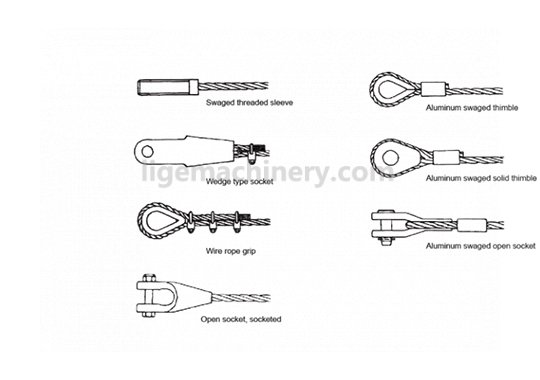
We use Talurit press dies and ferrules for complete compatibility. The ferrules are totally traceable and validated to EN13411-3 standards. This consistency in process and parts ensures that our products achieve the designed wire strength efficiencies and enjoy full coverage under Talurit’s Product Liability Insurance.
Our standard steel thimbles are manufactured according to BS 464, FF-T-276b Type III (G414) or JIS B2802 (Type A) specifications. Our solid thimbles are built to JIS B2802, JIS F3403 or DIN 3091 standard.
For crane wire ropes many different types of sockets are used: open and closed spelter sockets, open and closed swage sockets, wedge sockets and Nemag rope pear sockets.
A wedge socket termination reduces the wire rope efficiency to 80%, but the wedge socket remains a popular choice because it is easy to install and can be attached after the wire rope is reeved.
The Nemag rope pear socket when paired with the Nemag quick release link forms an unbreakable connection between two ropes. Together, they enable quick and straightforward coupling and uncoupling of grabs on cranes. Made from high grade austenitic manganese steel, these Nemag fittings generally outlast the wire rope.
Our Spelter sockets and Nemag rope pear sockets are poured with Wirelock, the original cold socketing resin and the first socketing system to meet the performance criteria of DNV for offshore wire mooring rope, currently the DNV-OS-E304 standards. Wirelock produces a void free socket for 100% efficiency and safety, and is unparallel in dependability and fatigue performance.
Our sockets are made of high quality cast steel supplied in hot dipped galvanised finish and comply with EN10204 3.1/3.2, JIS F3432 or RR-S-550D, Type B standard.
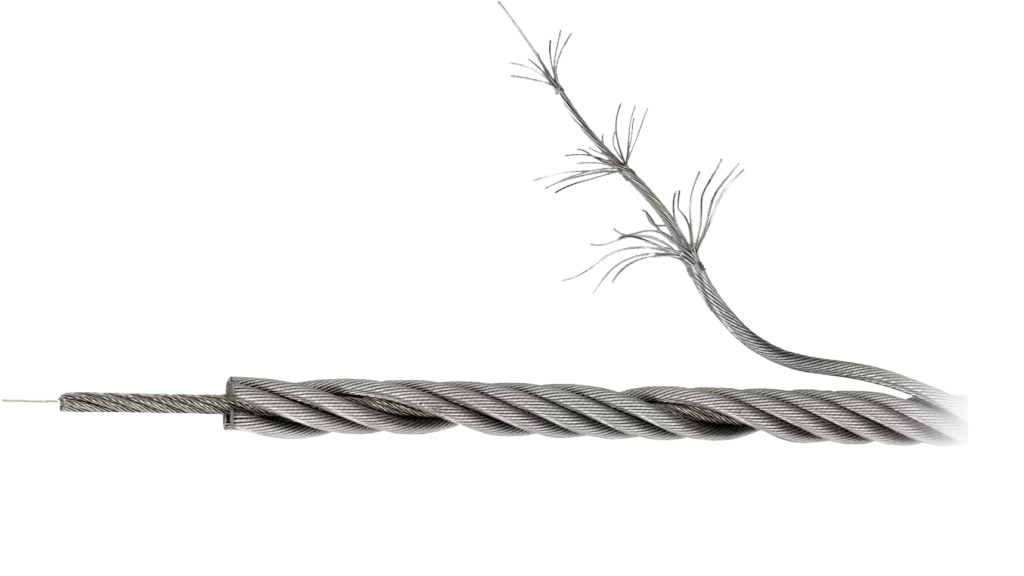
There are many different types of wire rope sockets, some of them specific to a particular kind of job or application, others designed to match certain sizes or types of wire rope. It’s especially important to match the socket to the rope correctly when replacing components.
Open and Closed Sockets–Most wire rope sockets come in open or closed varieties. Open sockets have a pin or bolt to accommodate a hook block or other type of fitting. Closed sockets form a hole designed to accept a pin or bolt.
Swaged Sockets– This type of socket is mechanically pressed onto wire rope using special dies. They are resistant to wire fatigue and breakage at 100% of the rope’s strength but must be professionally crimped and secured with the correct size dies.
Spelter or Poured Sockets–Spelter, also known as poured sockets, attach onto the end of a wire rope cable with molten zinc or resin. Once it hardens, the socket stays firmly welded onto the end of the cable. These are one of the most efficient types of wire rope end attachments with close to 100% efficiency.
WedgeSockets – Wedge sockets secure the rope to the end attachment by passing it around a grooved and wedge-shaped piece of steel. This type of socket is popular because it can be installed and adjusted in the field, providing 80% efficiency. Wedge sockets are common for construction and mining applications where the wire rope may be subjected to high stress and abrasion.
Wire rope and termination sockets are an essential component of construction and mechanical systems that require tension or support. As long as they are matched correctly to the size and material of wire rope and professionally installed, they form part of a strong mechanism for lifting, hauling, and supporting heavy loads.
If you need assistance correctly matching your wire rope and termination sockets, you can count on our team at Certified Slings and Supply® to help. We have a full inventory of the highest quality products, more than sixty years of experience at our disposal, and regularly perform on-site inspections for rigging equipment of all kinds. For help keeping your construction operations running smoothly and your workers safe on the job site, give us a call at 1-800-486-5542 today.
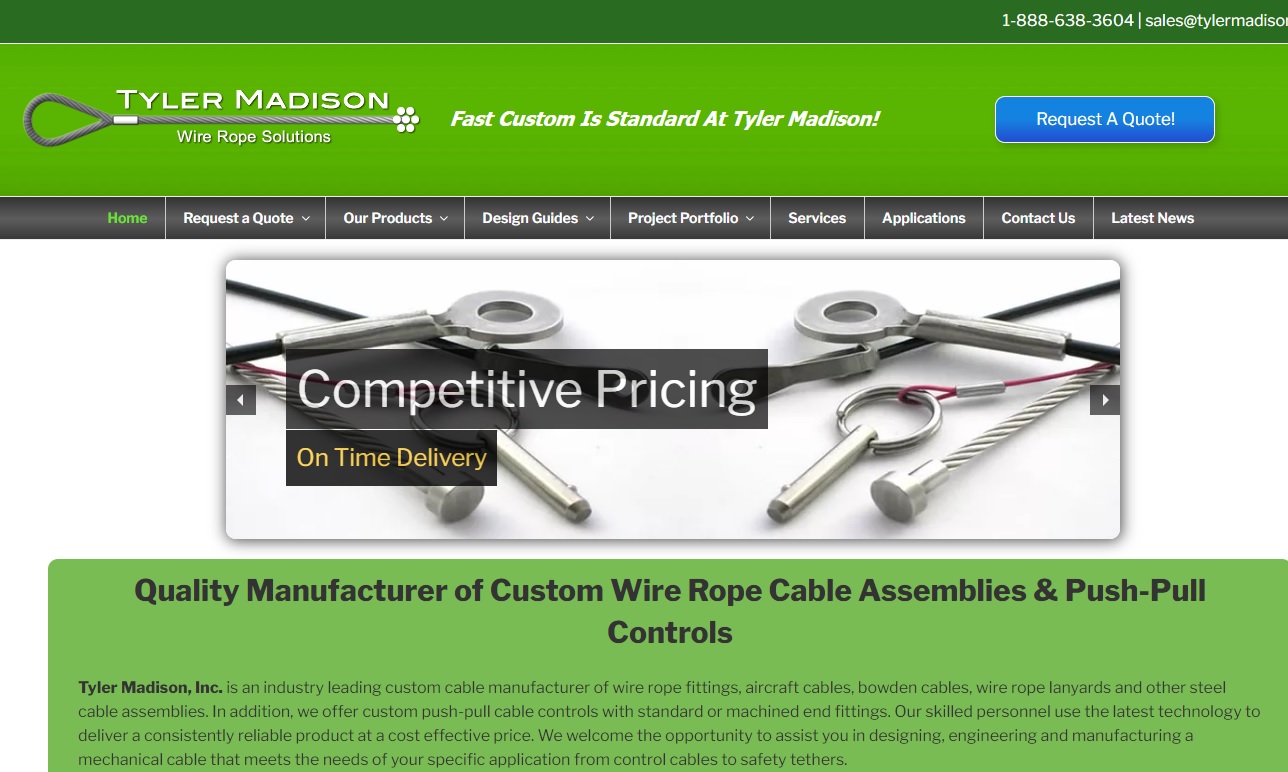
We get asked quite frequently..... "How to fitting the DIY Swageless Compression Fittings to the end of you Steel Wire Rope?", it can be quite tricky if you have never attached…

Wire rope clip is otherwise known as a wire rope clamp, wire cable clamp, wire clamp, wire clip, U-bolt, etc. It is widely used for making eye-loop connections or join two wire rope cable ends together. The traditional styles of wire rope clips usually have three components: a U-shaped bolt, a forged or cast iron saddle, and two nuts.
The wire rope clips are available in a range of sizes and finishes, while you can easily find the difference from the appearance, traditional wire clips with u bolt, saddle and nuts, fist grip, stamped cable clamp.
Cast and malleable wire rope clips can only be used under light duty loads applications with relatively light loads, such as handrails, fencing, guard rails, etc.
While the drop forged wire rope clip variety is recommended for important, critical or sustaining overhead loads, such as guy lines, support lines, scaffolding, etc. The drop forged wire rope clips can be used in critical suspending, guying, and tie-down applications for the die forging process make them strong and more durable and the heating and hammering steps make their structure to be consistent and conform to the shape of the forged item.
Simplex and duplex cable clamps are also known as single stamped wire clip and double stamped cable clip are composed of stamping plate, saddle, and bolts, feature an aesthetic design, used for outdoor light duty applications.
Wire rope clips are available in a variety of materials and finishes but basically three types of materials, carbon steel, cast, malleable iron, and stainless steel.
Carbon steel wire rope cable clamps are galvanized, or hot dipped galvanized, the galvanised metal wire clamp has an added zinc layer to prevent rusting and protect against scratching and the addition of carbon corresponds with an increase in the hardness and strength of wire rope cable clamps. G, but stainless steel wire rope clamps are the best choice for corrosion-resistant applications that can be used for saltwater environments.
Commonly wire rope clamp installation is very simple, there’s a well-known saying can help you remember how to attach wire rope clips, that reads “never saddle a dead horse.” Just follow the recommendation ways:
Keep three or more wire rope clips attached at the end of the wire rope dead end, space between each wire rope clip should be at least 6 times the wire rope diameter.
You can see the correct and incorrect ways of installation from the following pictures and find how many wire rope clips to use at one wire rope loop.
The saddle shall be placed on the live end of the wire rope, with the U-bolt on the dead-end side—Remember the well-known saying: “Never saddle a dead horse.” Use at least two or three wire rope clips to secure the ends properly to the length of the rope, and tighten nuts evenly one by one until reaching the recommended torque.
If you have any wire rope clips questions, you can contact us by email at info@hilifting.com. We will be glad to share with you more useful information.




 8613371530291
8613371530291